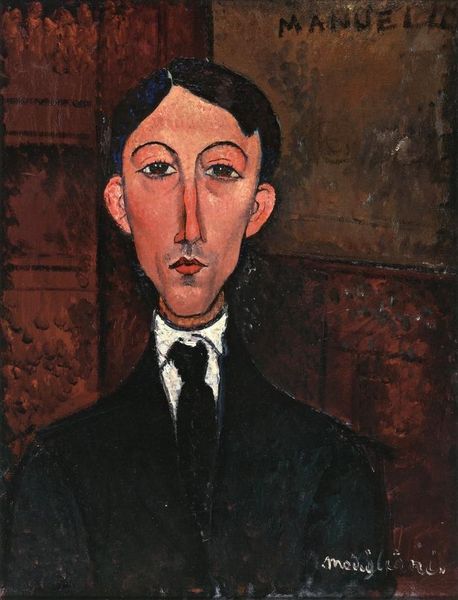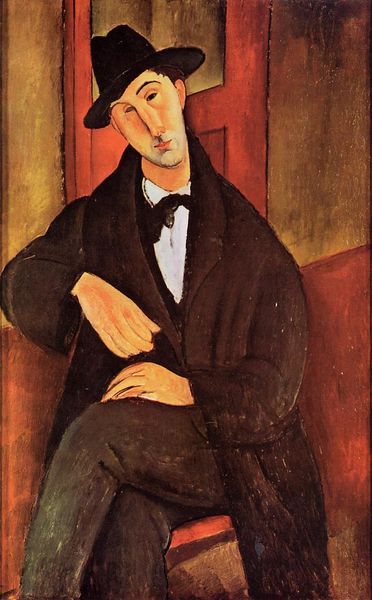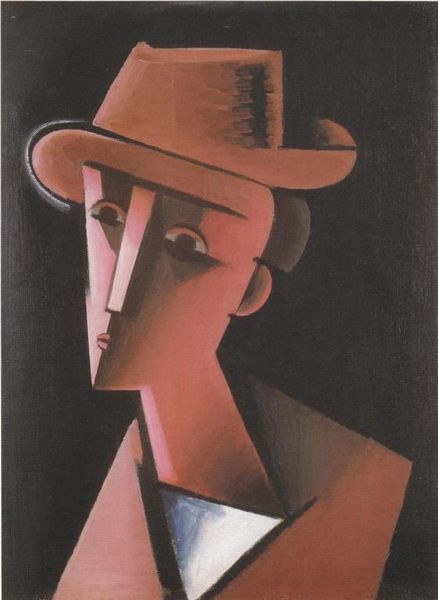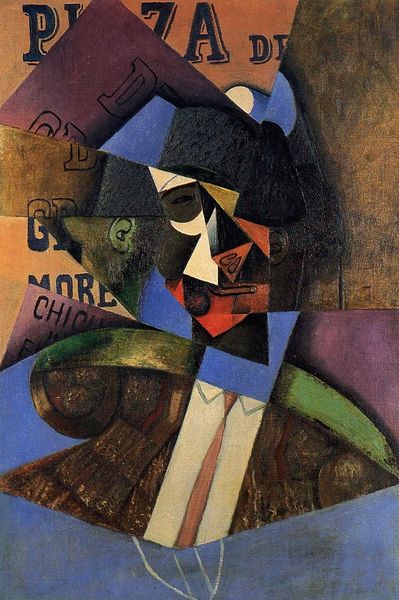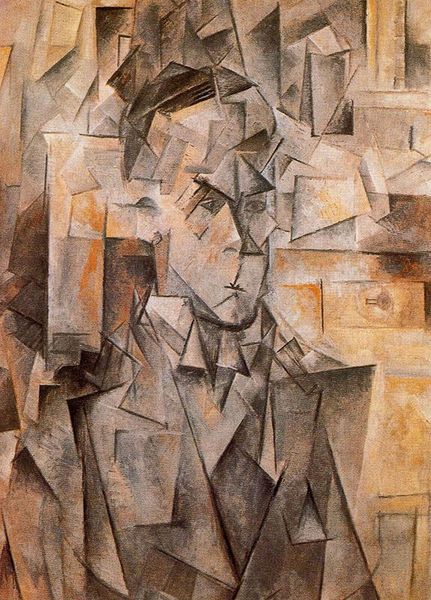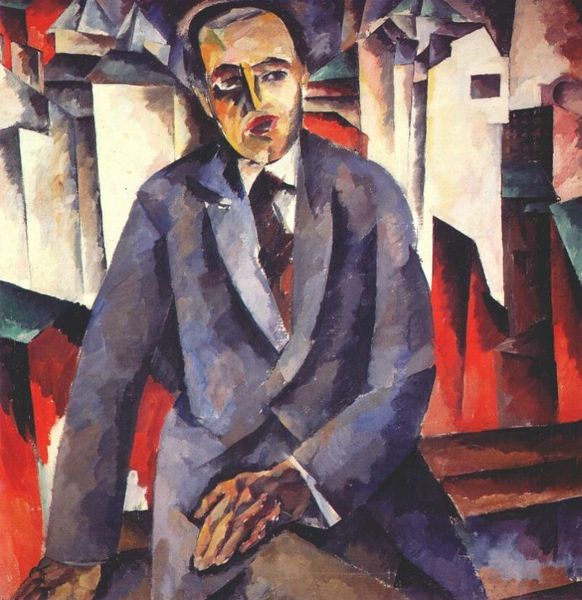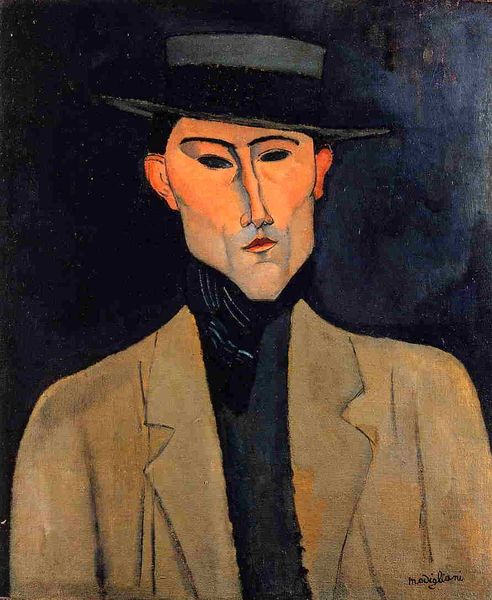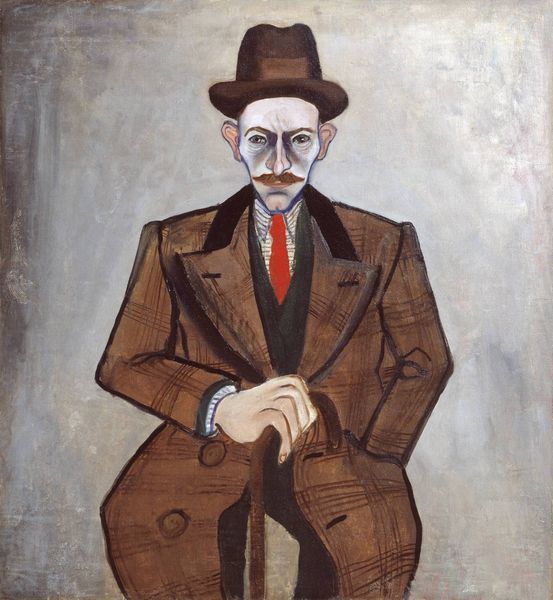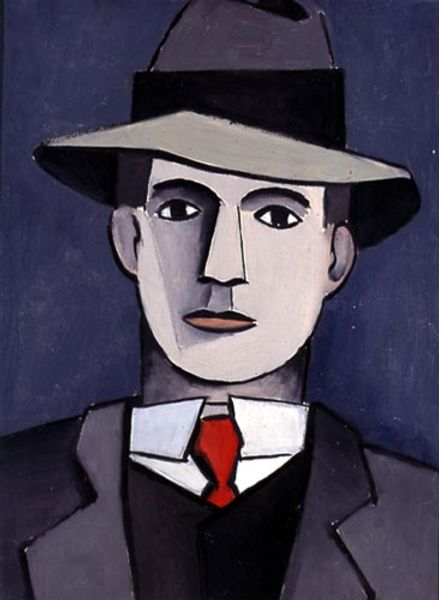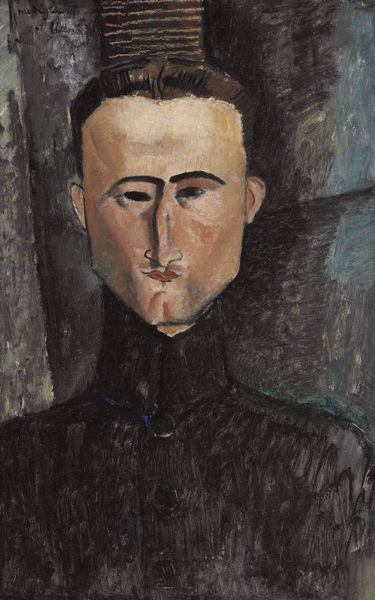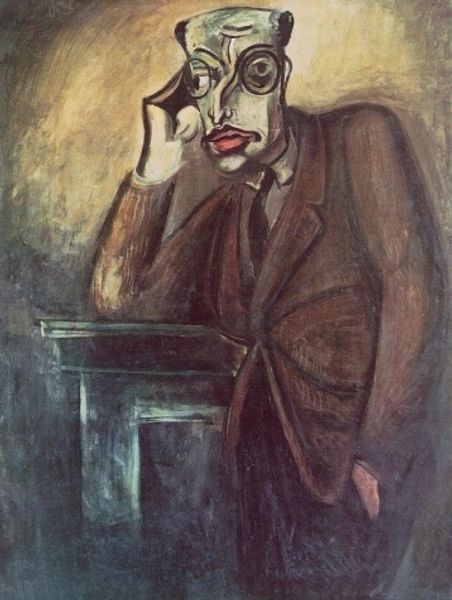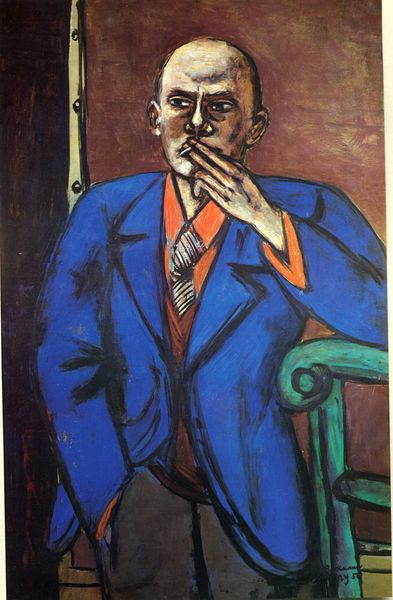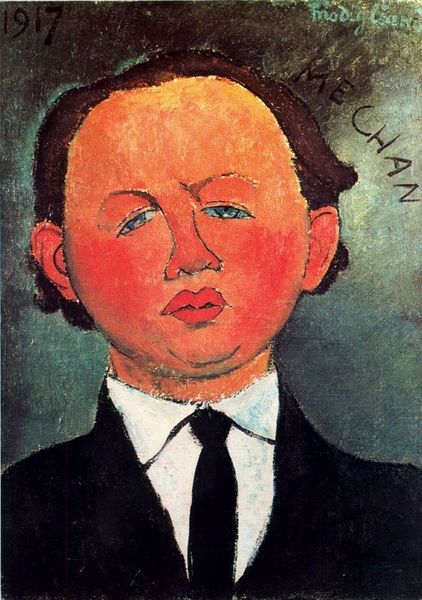
painting, oil-paint
#
portrait
#
painting
#
oil-paint
#
oil painting
#
expressionism
#
modernism
Copyright: Public domain
Editor: This is Amedeo Modigliani's 1916 oil painting, "Max Jacob." I’m struck by the stark red tones of the face, which contrasts with the subdued colors of the suit and hat. What do you make of this portrait, considering the time it was painted? Curator: Given that this was painted during the height of World War I, that intensity you observed, that pervasive redness, becomes particularly potent. The formal qualities—the elongated features, the flattening of space, and even that inscribed name, are certainly Modigliani trademarks. But consider also Jacob's identity as a Jewish intellectual and poet during a period of rising antisemitism and cultural upheaval. Editor: So, are you suggesting the redness might symbolize… anxiety, or even rage? Curator: Perhaps. Or it might represent the heightened reality of being “seen” and scrutinized in a hostile environment. Notice how Modigliani has rendered Jacob's gaze. It’s direct, but somewhat opaque, isn't it? How might we interpret that in relation to questions of visibility and representation? Editor: That's interesting; I hadn’t considered the social context so directly impacting the color choices. It adds another layer to the emotional reading of the portrait. Curator: Exactly. Art is never created in a vacuum. Considering the identity of both the artist and the sitter offers a richer understanding, don’t you think? Editor: Absolutely. It’s like unlocking a secret code within the painting, revealing more about that specific moment in history and their place within it. Curator: Precisely, and hopefully prompting us to examine our own.
Comments
No comments
Be the first to comment and join the conversation on the ultimate creative platform.
